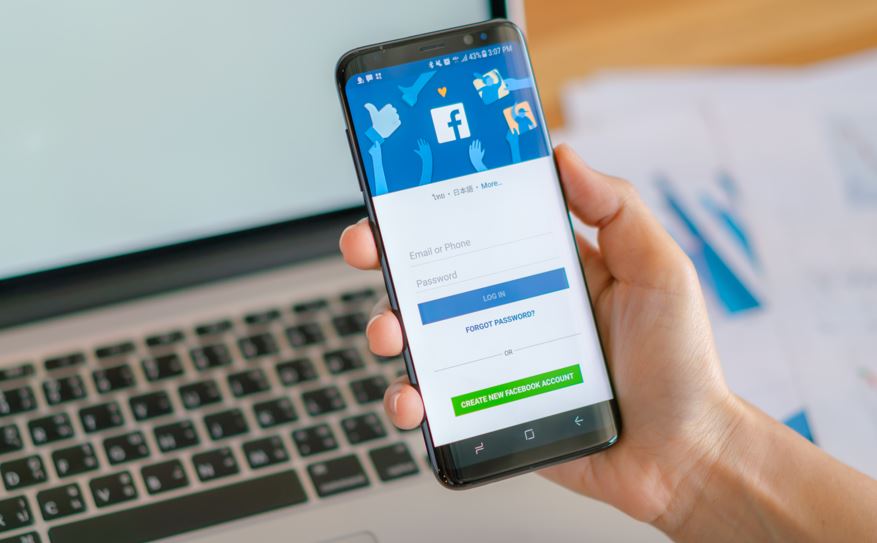Step-by-step guide to restoring your Facebook account
19th April 2024
Mike Mapley
Have you ever found yourself locked out of your Facebook account, unable to access your photos, messages, and connections? It can be a frustrating experience, but fear not - we're here to help.
In this article, we will provide you with step-by-step instructions on how to recover your Facebook account, from resetting your password to verifying your identity. We'll share some valuable tips on preventing your account from being hacked in the first place.
If you ever find yourself in a situation where you need to regain access to your Facebook account, this guide has got you covered.
Why Would You Need to Recover Your Facebook Account?
Recovering your Facebook account becomes necessary if you encounter issues accessing your account due to forgotten passwords, security concerns, or unauthorized access attempts. Ensuring the security and privacy of your data on social media platforms like Facebook is crucial in today's digital age, necessitating account recovery processes to regain access and protect your personal information.
Whether you inadvertently forgot your password, noticed unusual activity on your account indicating a security breach, or received notifications of suspicious logins, the need to recover your Facebook account may arise unexpectedly.
In such scenarios, prompt action is essential to prevent potential unauthorized access to your personal data and maintain control over your online presence. By swiftly initiating the account recovery procedures provided by Facebook, users can safeguard their digital footprint and ensure that their social media profiles remain secure.
Step-by-Step Instructions for Recovering Your Facebook Account
If you find yourself needing to recover your Facebook account, follow these step-by-step instructions to regain access securely and efficiently. These detailed guidelines will help you navigate the account recovery process with ease and ensure that you can log back into your social media profile successfully.
Step 1: Go to the Facebook Login Page
The first step in recovering your Facebook account is to navigate to the official Facebook login page where you can begin the account recovery process. Accessing the login page is crucial to initiate the steps necessary for account retrieval and regain access to your social media profile.
It is important to ensure that you are on the authentic Facebook login page by checking the URL for 'facebook.com' and looking for the padlock symbol in the address bar for a secure connection. Avoid clicking on any suspicious links or ads leading to login pages to prevent falling victim to phishing scams. Consider bookmarking the official Facebook login page to easily access it in the future and avoid potential risks associated with visiting fake websites posing as Facebook's login page.
Step 2: Click on 'Forgot Password?'
Once on the Facebook login page, locate and click on the 'Forgot Password?' option to initiate the password recovery process for your account. This step is essential in resetting your password and regaining control of your social media login credentials.
By selecting the 'Forgot Password?' link, Facebook initiates a verification process to confirm the account ownership. Users can choose to receive a verification code via email or phone number linked to the account. After entering the verification code, Facebook prompts users to create a new password. This secure method ensures that only the legitimate account owner can reset the password and prevent unauthorized access to the account. Once the new password is set, users can log back into their account and resume their social media activities seamlessly.
Step 3: Enter Your Email, Phone Number, or Username
After clicking on 'Forgot Password?', you will be prompted to enter your registered email, phone number, or username associated with your Facebook account. Providing this information correctly is essential for verifying your identity and proceeding with the account recovery process.
Entering the accurate details ensures that Facebook can verify that you are the rightful owner of the account, thus safeguarding your privacy and security. Incorrect information may lead to delays or even the inability to recover your account.
By accurately providing the requested information, you streamline the process and increase the likelihood of regaining access to your account swiftly. It is advisable to double-check the details before submission to avoid any hurdles in the recovery process.
Step 4: Choose a Recovery Method
Upon entering your login details, you will need to select a recovery method to verify your identity and proceed with the account recovery process. Choosing the appropriate recovery option is crucial in confirming your ownership of the Facebook account.
- The first recovery method offered by Facebook is email verification. This involves sending a verification link to the email associated with your account. By clicking on the link, you can confirm your identity and regain access.
- Another popular method is security questions, where you provide answers to predetermined questions. Two-factor authentication adds an extra layer of security by requiring a secondary verification code.
Consider factors like accessibility, security, and convenience when selecting the most suitable method for recovering your Facebook account.
Step 5: Verify Your Identity
Verification of your identity is a critical step in the Facebook account recovery process. You will receive a verification code or be required to answer security questions to confirm that you are the rightful owner of the account before proceeding further.
Maintaining the security and privacy of user accounts is essential in today's digital landscape, and Facebook takes this responsibility seriously. To verify your identity, Facebook may also employ methods such as sending a link to your email or asking for a photo ID. It's crucial to follow the instructions carefully and provide accurate information during this process to avoid any delays in recovering your account. Make sure to keep your contact information up to date to facilitate the verification process smoothly.
Step 6: Reset Your Password
After verifying your identity, the final step in recovering your Facebook account is to reset your password. Creating a new password ensures the security of your account and grants you access to your social media profile with updated login details.
When selecting a new password, it is crucial to opt for a strong and unique combination of letters, numbers, and special characters. Avoid using easily guessable information such as birthdays, names, or common words. A good practice is to use a passphrase that is easy for you to remember but difficult for others to guess. It is also recommended to change your password regularly and never share it with anyone.
Consider enabling two-factor authentication for an extra layer of security when logging into your Facebook account.
Tips for Preventing Your Facebook Account from Being Hacked
Protecting your Facebook account from potential hacking attempts is crucial in safeguarding your personal data and maintaining online privacy. Implementing security measures like two-factor authentication and ensuring the confidentiality of your login credentials can significantly enhance the security of your social media profile.
- Setting up two-factor authentication adds an extra layer of security by requiring a secondary verification method, such as a code sent to your mobile device.
- Be sure to use complex passwords that include a mix of letters, numbers, and special characters to make it harder for hackers to crack.
- Regularly monitoring your account for any suspicious activity and being cautious of phishing scams can help prevent unauthorized access.
- Remember, staying vigilant and proactive are key steps to keep your Facebook account secure.
Use a Strong and Unique Password
Creating a strong and unique password is the first line of defense in protecting your Facebook account from unauthorized access and potential hacking incidents. By setting up a robust password, you can significantly enhance the security of your account and prevent unauthorized users from gaining entry.
A strong password should ideally be a combination of uppercase and lowercase letters, numbers, and special characters. Avoid using easily guessable information like your name, birthdate, or common words. It's recommended to opt for a passphrase that is easy for you to remember but hard for others to guess.
Never share your password with anyone or store it in places that are easily accessible to others, such as on sticky notes or in emails. Regularly updating your password and enabling two-factor authentication are further steps to safeguard your Facebook account.
Enable Two-Factor Authentication
Enabling two-factor authentication adds an extra layer of security to your Facebook account by requiring a secondary verification method in addition to your password.
It is essential to safeguard your personal information and communication on social media platforms. Two-factor authentication ensures that even if your password is compromised, a hacker cannot easily gain access to your account. To set up this feature on Facebook, go to your account settings, then select 'Security and Login'. From there, choose 'Use two-factor authentication' and follow the prompts to add an extra level of protection to your account. By enabling this security feature, you are taking proactive steps to secure your account privacy and maintain control over your online presence.
Be Wary of Suspicious Emails or Messages
Maintaining vigilance against suspicious emails or messages is essential to safeguarding your Facebook account and personal data from potential phishing scams or malware attacks. Being cautious when interacting with unsolicited messages can help prevent unauthorized access to your account and protect your online privacy.
Phishing attempts often disguise themselves as legitimate communications from reputable sources, such as social media platforms like Facebook. Look out for misspelled URLs, requests for sensitive information, or urgent demands for immediate action. Avoid clicking on suspicious links or downloading attachments from unknown senders, as they could contain harmful malware. Ensure that your account settings are secure and utilize two-factor authentication for an added layer of protection. Remember to never share your login credentials or personal details with unknown sources online.
Regularly Check Your Active Sessions and Logged-In Devices
Monitoring your active sessions and verifying logged-in devices on your Facebook account can help you identify any unauthorized access or suspicious activities. Regularly reviewing the devices connected to your account ensures that only trusted devices have access, enhancing the security of your social media profile.
To check your active sessions, simply go to your Facebook settings, then click on Security and Login. Here, you will see a list of all devices currently logged into your account.
If you notice any unfamiliar devices or locations, you can immediately log them out or secure your account by changing your password. It's crucial to monitor these sessions regularly to stay informed about who has access to your account and to protect your personal information from potential breaches.
What to Do If You Can't Recover Your Facebook Account
In cases where traditional account recovery methods fail, and you are unable to regain access to your Facebook account, it is essential to take immediate action to secure your account and seek further assistance. By following specific steps and contacting support, you can address account security issues effectively.
One alternative measure is to report your hacked account directly to Facebook through their dedicated help center. This involves providing detailed information about your account and the suspected hacking incident.
Exploring additional recovery options such as verifying your identity through trusted contacts or using two-factor authentication can bolster your account's security. Remember to remain vigilant and promptly address any suspicious activities to prevent further unauthorized access.
Contact Facebook Support
When facing challenges in recovering your Facebook account, reaching out to Facebook support can provide you with the necessary assistance and guidance to resolve account access issues. Contacting customer service ensures that you receive expert help in troubleshooting account recovery problems and enhancing the security of your profile.
Facebook offers various support channels through which users can seek assistance for account recovery, including online help forums, email support, and the option to contact support directly through the platform.
It is crucial to prioritize account security and seek professional help if you suspect any unauthorized access or suspicious activities on your Facebook profile. By promptly reaching out to Facebook support, you can safeguard your account and regain access to your personal information and connections within the platform.
Report Your Account as Hacked
If you suspect that your Facebook account has been compromised or hacked, reporting the incident to Facebook's security team is crucial in initiating account recovery measures and safeguarding your personal information. Promptly reporting hacked accounts can help prevent further unauthorized access and protect your account from potential security threats.
To report a hacked Facebook account, visit the Help Center and navigate to the 'Report Compromised Account' section. Provide as much detail as possible about the suspicious activity, including any unfamiliar logins or changes to your profile. Change your password immediately and enable two-factor authentication for added security. Keep an eye on your account for any unusual activity and update your security settings regularly. Remember, swift action is essential to minimize the impact of a compromised account and secure your online presence.
Create a New Facebook Account
As a last resort in cases where account recovery is not feasible and security concerns persist, creating a new Facebook account may be a viable option to establish a fresh online presence and protect your digital identity. Creating a new account allows you to start afresh and implement robust security measures from the outset.
When setting up a new account, it's important to use a strong and unique password, avoid sharing personal information publicly, and enable two-factor authentication for an added layer of security.
Regularly reviewing privacy settings and keeping your profile information up-to-date can also help in managing your account effectively. By staying vigilant against phishing scams and suspicious activities, you can minimize the risks of unauthorized access to your newly created Facebook account.















